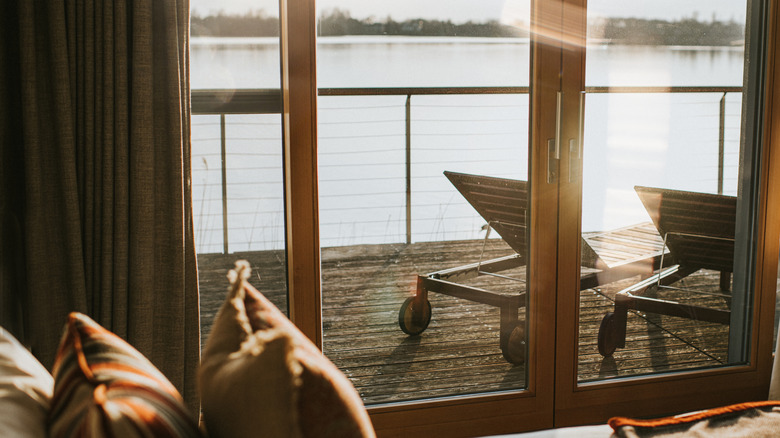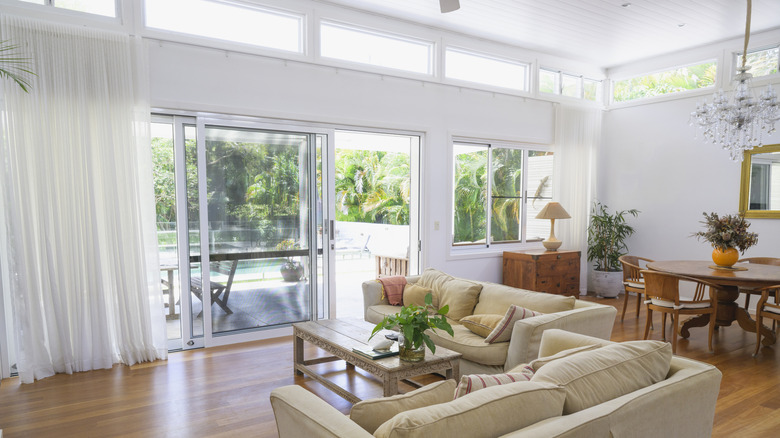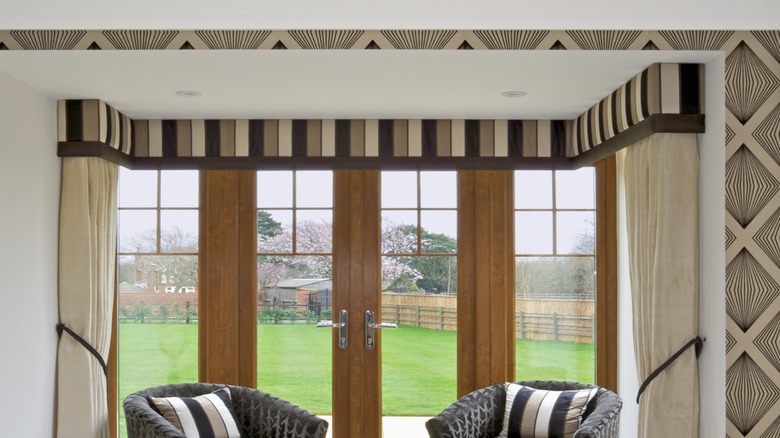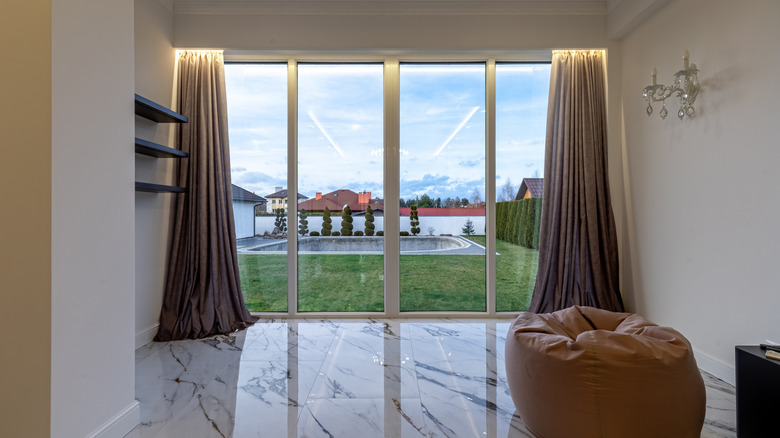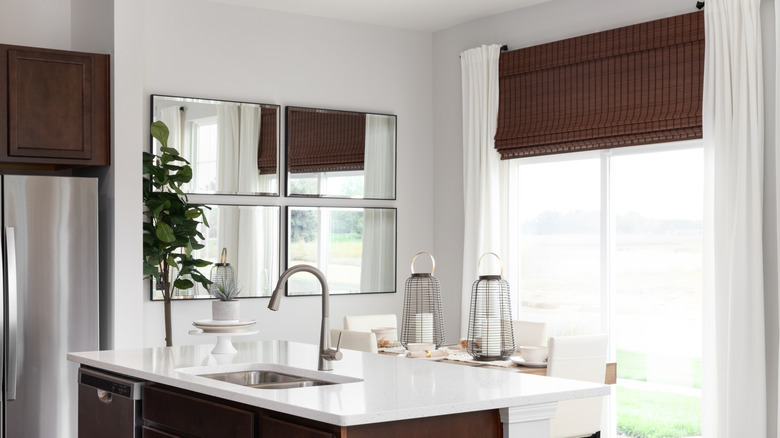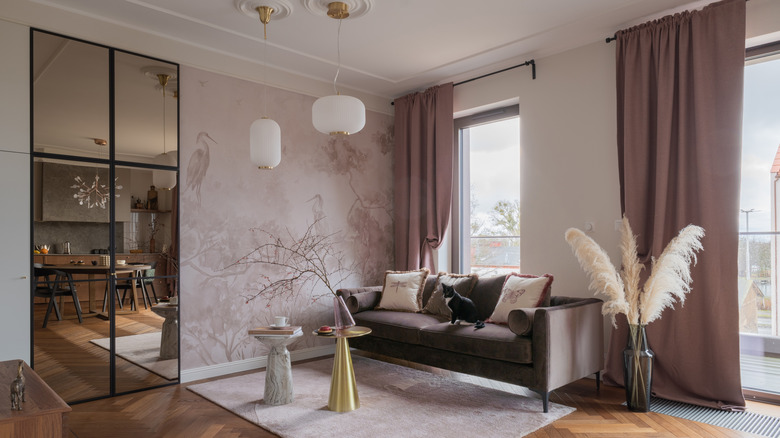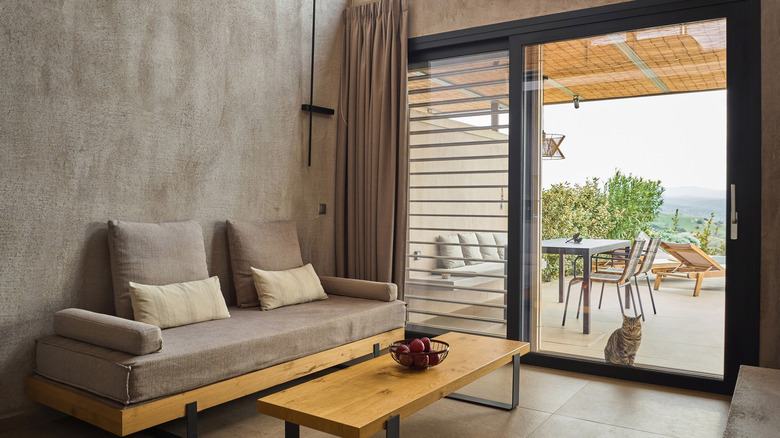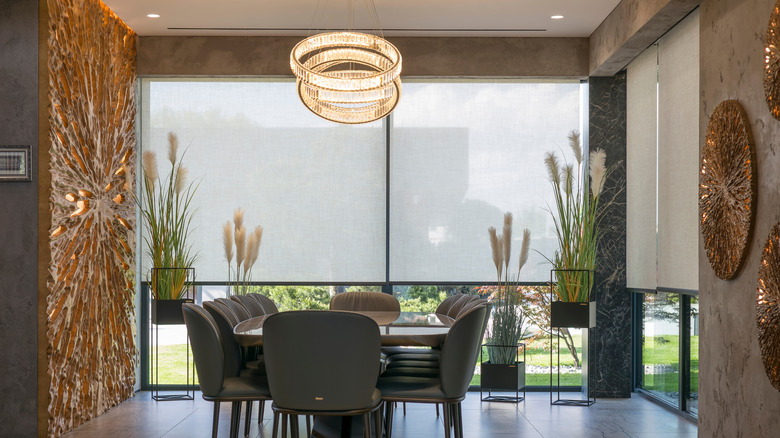7 Gorgeous Sliding Glass Door Curtain Ideas That'll Totally Transform Your Space
Sliding glass doors are a popular feature in homes that help provide a seamless transition between indoor and outdoor spaces, effectively blending living areas in a modern way. They enhance aesthetic appeal, offer natural light in rooms and opening up spaces to feel larger and airier. However, despite such benefits, there are some drawbacks to having sliding glass doors, among them security concerns since folks can simply look inside your home without hindrance. There are also some energy concerns when it comes to expansive sliding glass doors too — these uninterrupted sections of glass can let in an excessive amount of light, warming up spaces dramatically during warmer seasons, but at the same time letting out too much heat during cold weather seasons. That said, there's one easy solution to all of these concerns: curtains.
Curtains and other window treatments are simple, easy ways to provide your home with a little privacy and a little extra shade when you have sliding glass doors. Of course, you wouldn't want these curtains to look cheesy. Rather, there are several of gorgeous sliding glass door curtain ideas — from sleek roller blinds to clever placements — that'll totally transform your space, elevating it, instead of making it look tacky. Not only do these curtain ideas add some oomph to your decor, they also address many sliding glass door concerns, as an extra bonus, too!
Sheer curtains high and wide
A familiar rule of thumb when it comes to hanging curtains, go "high and wide" with some sheer, white linens over your sliding glass doors to enhance the openness and airiness of the room. Hanging high means going at least six inches above the window or door, and going wide means extending at least four inches beyond each end of the door. It'll make your room feel more spacious and breezy, enhancing the sliding glass doors as a focal point of the room, and allowing just the perfect amount of light into the space.
Add a valance
While adding a valance or cornice (ornamental, fabric-covered boxes or drapes) around the tops of your sliding glass doors may feel dated, in reality, these classic treatments are making a big comeback. This isn't the window box of your grandma's mid-century living room, though; we're looking to clean and sleek structures that can also hide any unsightly hanging hardware that you'd rather be out of sight. Just be sure to hang those cornices or valences wide enough so it doesn't awkwardly disrupt the space, or else you do run the risk of it looking unintentionally tacky.
Upward lighting on cornices or valances
Speaking of infusing some luxury into your sliding glass doors, you can also add some up-lighting to your cornices or valances to make your room feel ultra-contemporary, not unlike those sleek, modern hotel rooms and lobbies that use the same technique. If you have a beautiful view out of your sliding glass doors you want to highlight, adding these upward-facing lights to your curtains will frame and accentuate the view like it's a piece of art to ogle. Just be sure to use lights that will not become hot. LEDs are the best option. You can take safety measures a step further with fireproof curtains.
Combine treatment styles
Just because you only have one set of glass doors, this doesn't mean you have to stick with one curtain style. Instead, add texture and layer to a space by using different window treatment methods. For instance, if you opt for dense wooden blinds, then pair them with some more delicate curtains to break up the space and create visual interest. Aesthetics aside, having two curtain methods in place also helps you customize how much light you let into the room as well, essentially offering you "levels" to the natural sunlight that comes into the room.
Trim out every set of doors
If you have multiple sets of sliding glass doors, consider trimming out each and every set to add an air of opulence to your room. Framing out each door exudes a chateau-like, sumptuous atmosphere, evoking a style that otherwise feels reserved for the Gold Room at the of Palace of Versailles or, at the very least, a luxury hotel with a penchant for detail. Coordinate your curtains with the wall colors and furniture accents in the room to coordinate the space.
Go monochrome
Some folks get concerned that matching your curtains to your furniture and to your walls is a bit too matchy-matchy, but when executed right, it can make a room look chic. Coupled with an expansive sliding glass door, the monochromatic look will appear effortlessly chic. Consider going neutral to avoid overly-matching fears, and bear in mind that not all neutrals are created equal. Some neutral colors like Pantone's color of the year in 2025, Mocha Mousse, add depth and richness to the space without overwhelming it.
Sleek roller shades for a modern touch
For oversized sliding glass doors and a full wall of windows, sometimes the simplest and sleekest curtain or window treatment method is the chicest and most efficient. Roller blinds, one of many types of window treatments lauded for their ease and simplicity, making for a clean, neutral, and streamlined option for your sliding glass doors. Given their ease of use and installation, you can add roller blinds to your doors and all your oversized windows without breaking the bank. These nifty treatments can completely and consistently frame out a room for a sleek, uniform look.
